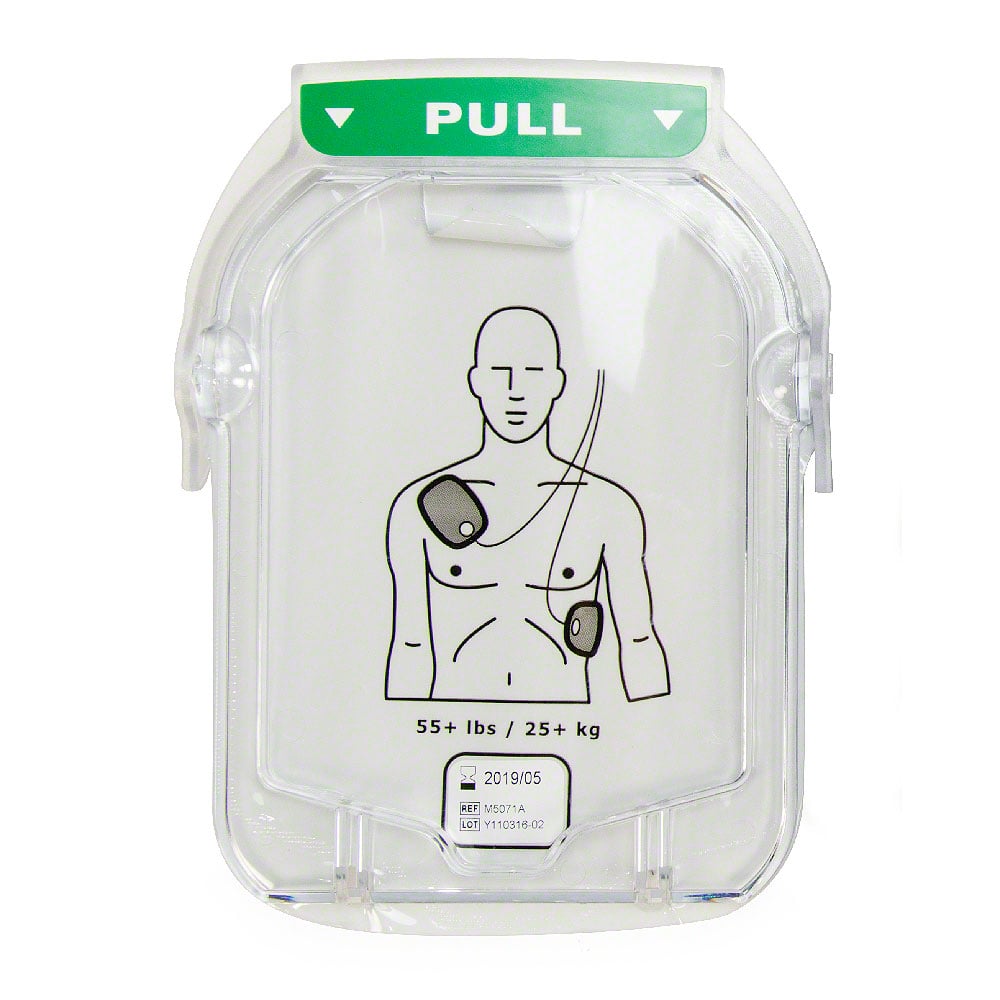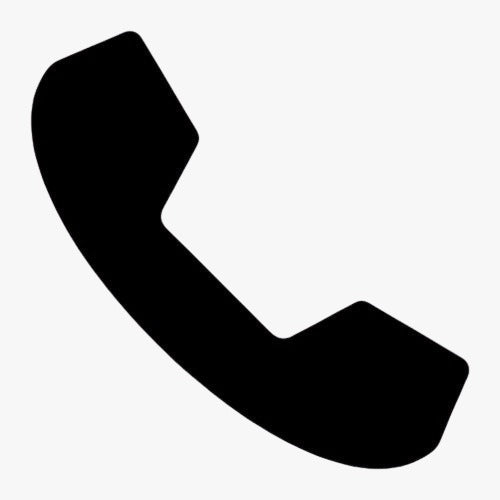Hospitals are legally obligated to have Automated External Defibrillators (AEDs) available on the premises for both professional and public use. As explained by the American Food and Drug Administration Administration (FDA), hospitals are one of the locations where AEDs are accessible to the public. Although medical professionals such as emergency medical technicians (EMTs) and paramedics usually use professional-grade manual defibrillators, AEDs can still be valuable for prompt public use during emergencies.
If you are responsible for acquiring an AED for a healthcare facility or medical transport vehicle, it is important to familiarize yourself with the best FDA-approved AEDs for hospitals and their available features to make an informed decision.
Philips HeartStart FRx
The Philips HeartStart FRx, manufactured by the same company as the Philips HeartStart Onsite AED, is an exceptional portable defibrillator for hospital environments. It boasts robust construction, clear visual icons, optional voice guidance for CPR, a key for child and infant settings, and compatibility with advanced defibrillators.
Durable Build
During a sudden cardiac arrest episode, every second counts, which is why it’s critical to choose a portable defibrillator that can handle impacts, shocks, moisture, and dirt. To guarantee it functions effectively in a hospital, even if accidentally dropped during transport, the Philips AED device:
- Can withstand drops onto a masonry surface up to 4 feet (1.22 meters)
- Meets MIL-STD 810G Fig. 5146E-1, random for vibration when operating and Fig. 5146E-2, swept sine (helicopter) for vibration in standby mode
- Meets IEC 60529 class IP55 water and dust requirements, protecting the device if it gets splashed with bodily fluids, cleaning liquids, or dirt
Visual Cues
In a loud setting like a hospital, visual cues are crucial to make sure the AED operator can provide proper treatment to the cardiac arrest victim, even if they cannot hear the device. The clear and easy-to-interpret flashing icons on the Philips HeartStart FRx are especially useful in noisy environments and guide non-medical rescuers who might be accessing the AED as a public device.
Optional Voice Guidance for CPR
The Philips HeartStart FRx AED offers voice guidance for cardiopulmonary resuscitation that can be enabled or disabled as needed. This is ideal for healthcare facilities where trained medical professionals who have received advanced life support and CPR training might find the instructions to be an unnecessary distraction.
Child/Infant Setting Key
Sudden cardiac arrest can occur in both children and adults. To avoid the need for purchasing new child pads every two years or having separate pediatric AEDs, the Philips HeartStart FRx AED includes the cost-effective feature of the Philips Infant/Child Key (sold separately), which adjusts the strength of the electric shock. This makes the Philips HeartStart FRx one of the most cost-efficient devices in the market.
Compatibility with Emergency Medical Services Equipment
The Philips HeartStart FRx comes with defibrillation pads that are compatible with advanced defibrillators used by medical professionals, enabling a smooth transition and continuity of care. This feature makes the HeartStart FRx an ideal AED for hospitals, both inside and outside its walls, as it ensures a continuous care plan in case of a sudden cardiac arrest.
HeartSine Samaritan Automated External Defibrillators
The HeartSine Samaritan PAD series of automated external defibrillators is another excellent option for healthcare facilities, thanks to these devices’ extremely rugged and lightweight construction. This series consists of the HeartSine Samaritan PAD 350P, HeartSine Samaritan PAD 360P, and HeartSine Samaritan PAD 450P.
There are several features that make these some of the best AEDs for hospitals.
Compact and Durable: The Lightest AED on the Market
The HeartSine Samaritan PAD series of automatic external defibrillators (AEDs) approved by the FDA are the lightest of them all, weighing just 2.4 lbs and significantly lighter than the Philips HeartStart FRx. Despite their compact and lightweight design, these AEDs are rugged, meeting military drop standards and withstanding water and dust thanks to an IP56 rating.
Advanced Biphasic Shock Delivery Technology
The HeartSine Samaritan PAD series AEDs employ the company’s unique SCOPE biphasic technology to administer the optimal shock for the patient’s heart rhythm. This ensures that the electrical shock is delivered with maximum effectiveness, regardless of the patient’s impedance.
Effortless Use
The HeartSine Samaritan PAD series offers three different models with simple and straightforward operation. The PAD 350P and PAD 450P have two buttons- one to turn the device on and off, and another to deliver the shock. The PAD 360P, on the other hand, is fully automatic and only requires pressing a single button to activate. All three models come equipped with clear voice instructions and a metronome for effective chest compressions.
Integrated Pad and Battery Packs
Simplifying supply management, the Samaritan PAD series AEDs come with combined pad-battery packs that require replacement only every four years, reducing the complexity of monitoring expiration dates. It’s worth mentioning that the child and adult pad-battery packs are sold separately.
Instant CPR Feedback
The HeartSine Samaritan PAD 450P features real-time guidance on the depth of chest compressions, making it a valuable tool for both experienced and inexperienced rescuers. This feedback ensures that high-quality CPR can be provided, whether it is a medical professional responding to a sudden cardiac arrest in a patient or a lay responder helping a victim of SCA in their vicinity.
Embedded Wi-Fi Connectivity
The HeartSine Samaritan PAD series defibrillators come with integrated Wi-Fi connectivity so that you can check the readiness of the device(s) remotely using the LIFELINKcentral AED Program Manager. When a healthcare facility has multiple wings and several AEDs to test and maintain, being able to check their readiness virtually makes it much easier to comply with AED maintenance requirements.
ZOLL AED Plus
ZOLL—named after defibrillation pioneer Paul Zoll—has been an industry leader for over 25 years and continues to be one of the brands most commonly used by EMS professionals. For hospitals, the ZOLL AED Plus is a great AED machine to have on hand thanks to its easy-to-use features, real-time CPR feedback, and long pad and battery life.
Easy to Use
The ZOLL AED Plus comes in semi-automatic and fully automatic models, depending on whether you prefer to press the shock button when advised or let the device deliver the shock automatically. Whichever option you choose, the machines offer the same visual and audio prompts to start CPR and analyze the patient’s heart rhythm to see whether an AED shockable rhythm is present (ventricular fibrillation or pulseless tachycardia).
CPR Feedback
Medical professionals are used to delivering high-quality CPR, but others present in a hospital—or who go to the hospital for a public access AED—may have never given chest compressions before. To help the rescuer deliver high-quality CPR, the ZOLL AED Plus provides feedback in real-time about the user’s CPR technique and instructs the rescuer to “push harder” if the compressions aren’t reaching an appropriate depth.
Long Pad and Battery Life
Like the HeartSine Samaritan PAD AEDs, the ZOLL AED Plus comes with lithium batteries and adult AED padsthat expire at the same time, although they are sold separately rather than together. In this case, the batteries and electrode pads last for five years—saving you money on replacements. ZOLL pediatric pads are sold separately for this portable device and also last for five years.
Key Components of a Successful Hospital AED Program
In addition to the automated external defibrillator itself, hospital-based AED programs need to comply with all of the AED regulations in your state that pertain to public access AED programs. Depending on your location, this may include:
- Oversight from a medical professional (this could be a physician, physician’s assistant, nurse, or naturopath, depending on the state)
- Annual or bi-annual AED training for all potential users, that includes special situations like a patient with an implantable cardioverter-defibrillator or another medical device like a pacemaker
- AED maintenance and testing following the AED manufacturers’ instructions and any additional state laws
- Access and signage requirements, such as clear arrows and signs indicating the location of each AED
- Post-event data download, reporting, and psychological support for rescuers and witnesses of the collapse
As most hospitals have several wings, office buildings, and even multiple locations (in the case of a franchise), AED program management can help you keep track of all your devices, expiration dates, and maintenance so that you know your automated external defibrillators are ready to use. The best defibrillators for hospitals need to be ready for action 24/7. Make sure you’re ready to save a life.
Disclaimer for information purposes only:
Our website provides information for general knowledge and informational purposes only. We do not offer medical advice, diagnosis, or treatment. Readers should consult with qualified healthcare professionals for personalized medical advice.
While we endeavor to ensure the accuracy and reliability of the information provided, we do not guarantee its completeness or suitability for any specific purpose. The use of this website is at the reader’s own risk.
By accessing and using this website, you agree to indemnify and hold harmless the website owners, authors, contributors, and affiliates from any claims, damages, liabilities, losses, or expenses resulting from your use of the information presented herein.






